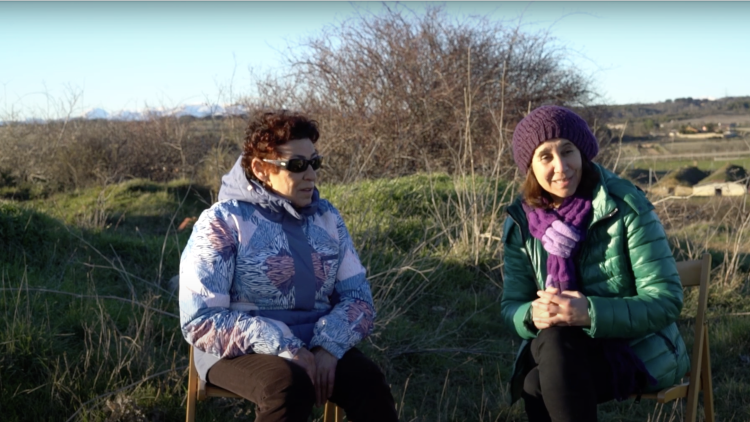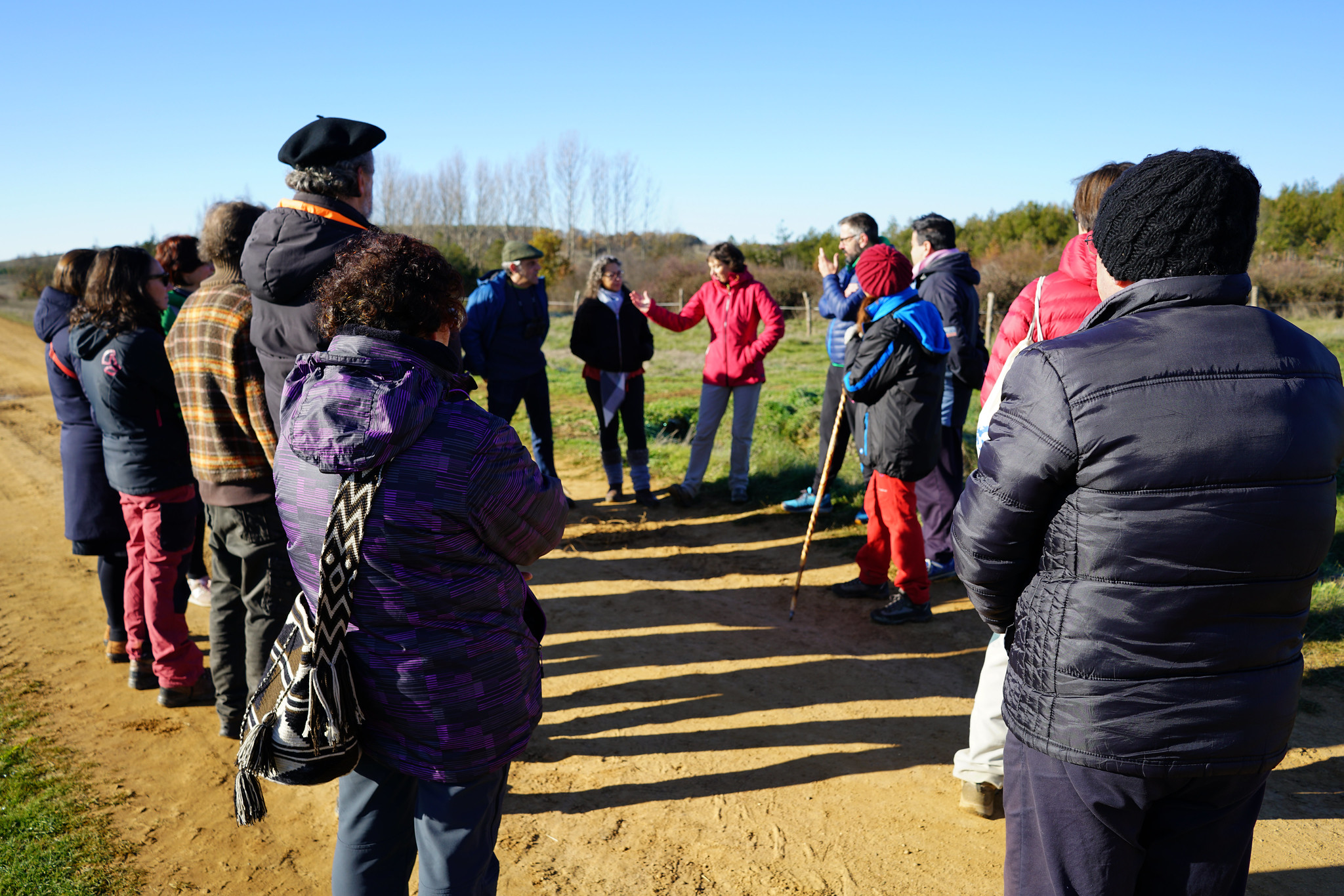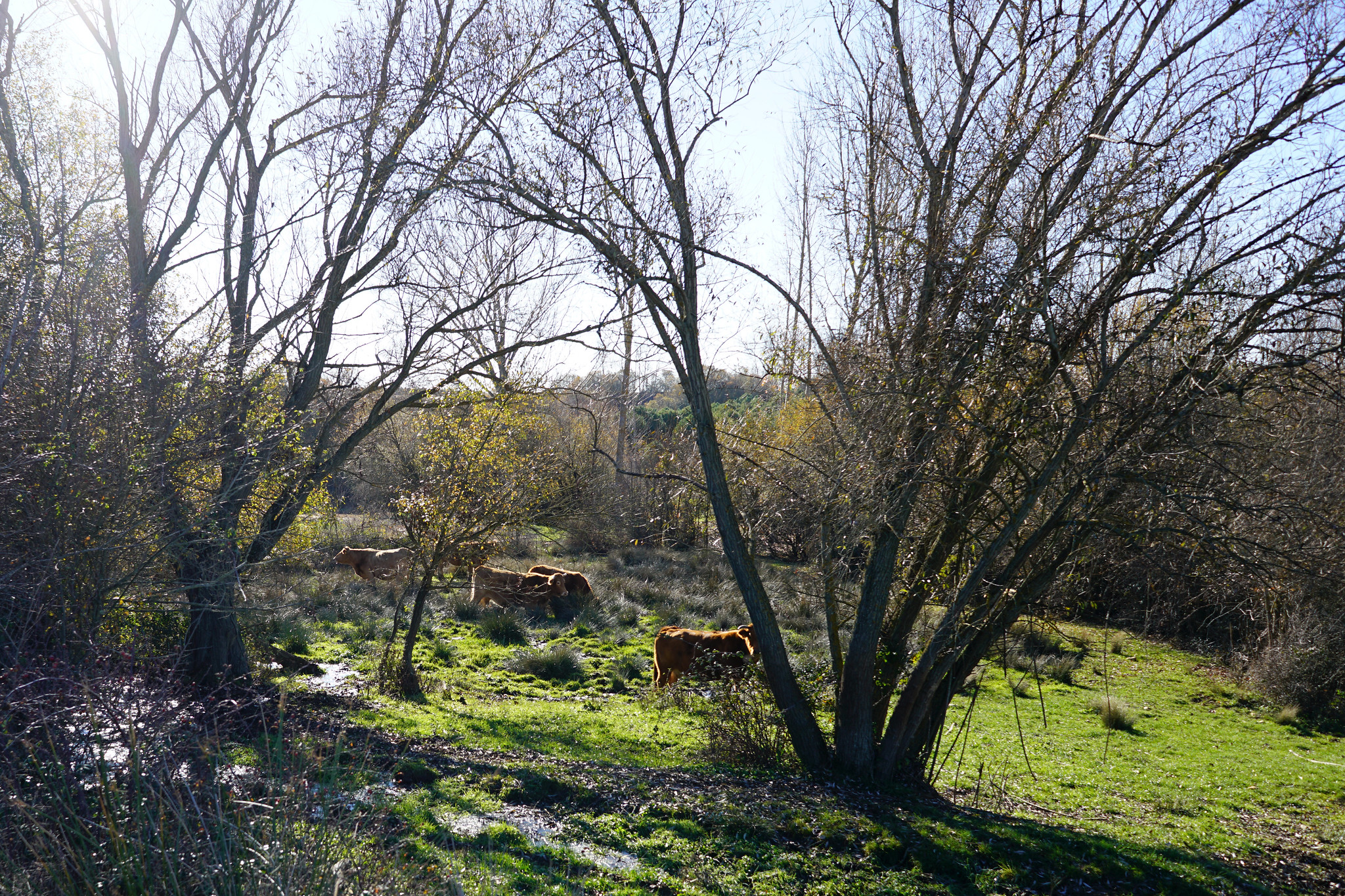“The interesting thing about this project is that it unites art and culture with protest and demands for change”

An interview with Aurora Panizo Luengo and Marina Castro Getino, citizen-commissioners of Narrativas Solares, the project that seeks a fair ecological transition in the province of León.
The Plataforma Ciudadana para la Defensa de la Sobarriba is a citizen platform whose members include the citizen-commissioners of the project Narrativas Solares, which seeks to achieve a fair ecological transition in the province of León. Two of the citizen-commissioners, Aurora Panizo and Marina Castro, reflect here on the struggle that led them to enter the Art for Sustainability open call, be selected as the winning project, and embark on a process of exchange in order to inspire others, and above all themselves.
Concomitentes (C): How did the citizen platform for the defence of La Sobarriba come about?
Aurora Panizo (AP): The platform was created more than a year ago, when we found out about plans to install a mega solar farm in this area. Daniela, who lives in the village that’s part of the land where the panels are going to be installed, started to call everyone. She launched the platform, and here we are.
Marina Castro (MC): In my case, Alfredo knew me. He has been coordinating us and bringing people together.
C: How did the platform get in touch with Alfredo?
AP: There was a link to Alfredo because he lived in the area for many years, here in Villavente, one of the villages in the municipality of Valdefresno.

C: What’s the impact of the ecological transition in the area? What do you envision for a process that will be difficult to stop?
AP: The environmentalists among us are convinced that we have to decarbonise, we can’t just keep living the way we do. Especially in this mining province, where coal has provided resources, quality of life, jobs… We greenies are sometimes regarded as crazy, utopian, or unsupportive. We’re convinced that an ecological transition is essential, but it must be fair. There would be no point swapping existing monsters for new ones, and to stay on this path of self-destruction. People who have always lived in the area have strong ideas about how to do things sustainably: a fair transition that would also prevent excesses.
MC: Very few people are really aware of what a mega project can imply, and of the possible impact of an ecological transition. That has to be our starting point, the main thing is to reach more people.
C: Marina, how has it affected you in your immediate context?
MC: I find it hard to breathe when I look at the map and see the extent of the first solar farm they’re putting in. I’ve always spent a lot of time out in the open air, I love the countryside, I’ve been outdoors as much as possible. But I think if people realised what this solar farm means…
“There’s a lack of awareness, people haven’t realised how important it is to walk along a path and see the birds, see the fields and the sun rising and setting. In that valley over there, bee-eaters come out at night. The day they stop, it will be to late to fix it. There’s a real need to reach more people…“
C: Had you heard of Concomitentes? How do you think the tools of art and culture can help with such a thorny, direct, social, topical issue?
AP: We hadn’t heard of you, this going to be something totally new. What makes the project interesting is the union of art and culture with protest and the demand for change. There aren’t that many people in the rural world, so we can’t organise big demonstrations, but we do resist. We’re not stupid, we know what’s best for us and we don’t want this area to become a big industrial estate.
Those of us who came to live in the country want to keep living in this wonderful environment, that’s why we’re fighting: “We want clean energy, but not like this,” not with these mega atrocities, not with these mega estates or mega solar or wind farms…
C: So in a sense, Concomitentes is giving you a way to amplify the protest…
AP: When the Concomitentes call for projects came out and Alfredo told us about it, we thought, “that’s great, it means we can continue this struggle to try to stop the solar farm.” Whether or not we can stop it is a different story, but it’s very exciting to be working on Narrativas Solares.
MC: Yes, it means we can do something.
AP: We still don’t know what it will turn into, but I think it will be wonderful for the local population. To see that we’re not just here holding up signs in protest—which we’ll still do—or making allegations or trying to get into the media. We are also transforming the struggle into something else. Whether or not the farm remains, I think it will become a symbol.
MC: And because it’s not politics… I think art will have an impact and boost the visibility of something that is not easy to explain to people.
AP: We also have to work within the frustration of knowing that we may not be able to stop it.
MC: You need to be enthusiastic about doing something, so you’re not just cowering.

C: How did the start of the project and the mediation play out?
AP: At the beginning there were four of us with Alfredo, before the project won. Then more people joined in, and some really interesting ideas have come up as a result.
MC: We’re a very diverse group of people with good ideas, a lot of respect for each other, and a love of the local area that blows me away. I’m practically the only native, and these people who live here are genuinely teaching us how to enjoy what we have.
Those of us who live here have always taken it for granted, so it turns out that we might not appreciate it as much.
AP: Yes, maybe those of us who came here from other places appreciate it more. The other day we went for a walk around the area where they want to install the mega solar farm and it was beautiful, wasn’t it Marina?
MC: All of us together...
AP: We kept the conversation going and more things kept coming up. It’s true that we’ve already got some concrete ideas, but we don’t know how they will come into being. But that walk was a turning point.
MC: And we connected. I mean, we’re all neighbours but I didn’t know there were such great people here. We’re a bit inward and closed-minded around here…
C: The process you’re describing is super interesting in itself. Have you started talking about or imagining the art work? Or are you concentrating on the path you’re on for the time being?
AP: I was thinking of a sculpture, something permanent that people can look at and think, “This was put here by those people who didn’t want the solar panels, and the memory of that struggle remains.”
MC: I want to get people out into the countryside to see the shrubs and the sunset. I’ve always thought about signposted routes, where you can bring schoolkids or elderly people, routes through the drylands or those barley or wheat fields that look like waves in the ocean when the wind blows. I don’t know, but something to do with seeing the land.
AP: I’d also like a maze to walk through, not the kind where you have to find your way out, but one in which you follow a set path to get to the centre, and then you retrace your steps to get out again. Or it could be something with trees and the sun…
“I’d like also like a maze to walk through, not the kind where you have to find your way out, but one in which you follow a set path to get to the centre, and then retrace your steps to get out again. Or it could be something with trees and the sun…”
C: How is Alfredo as mediator helping guide you through this process and into decision making?
AP: Alfredo asked us to write down expectations as well as concrete things, but we’ll still have to reach consensus.
MC: You can show people the land using some kind of display system. You can put it in the middle of the main square in each village, and say “look what we have here”, and encourage them to go for a walk in the countryside.
C: Finally, are you aware of having an impact or becoming an inspiration for other areas that are going through a similar process?
MC: Just as I look at what other people are doing to see what’s possible, I think we will achieve something that will inspire others.
AP: Fortunately, just as we’ve been looking at things that people have done elsewhere, recognising good initiatives, I think that what we do here will make us strong. And then of course it can be an example for others, why not? The seeds have been sown.
